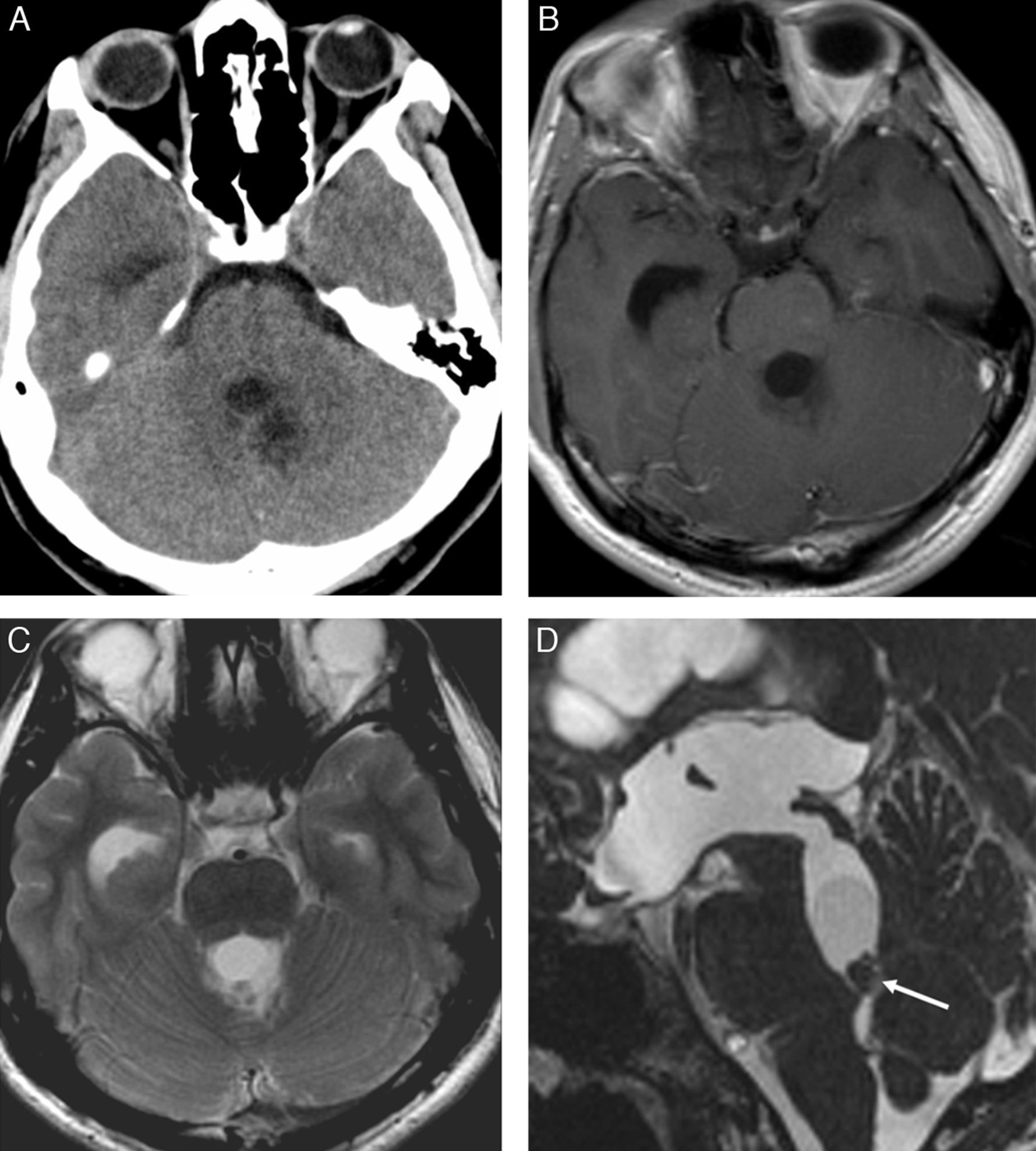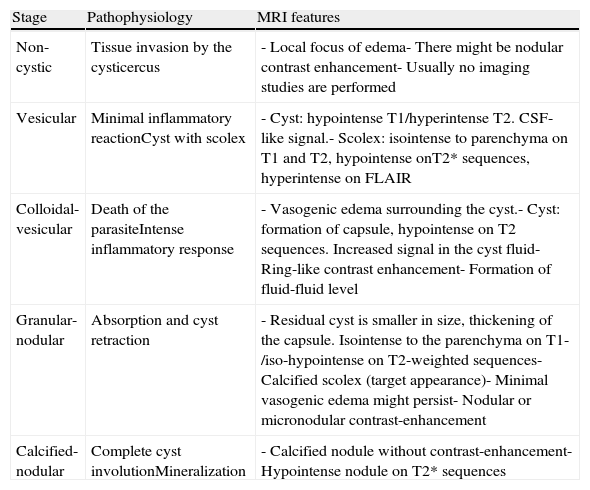Neurocysticercosis, caused by the larvae of Taenia solium, is the parasitic infection that most commonly involves the central nervous system in humans. Neurocysticercosis is endemic in practically all developing countries, and owing to globalization and immigration it is becoming more common in developed countries like those in western Europe.
The most common clinical manifestations are epilepsy, focal neurologic signs, and intracranial hypertension.
The imaging findings depend on the larval stage of Taenia solium, on the number and location of the parasites (parenchymal, subarachnoid, or intraventricular), as well as on the host's immune response (edema, gliosis, and arachnoiditis) and on the development of secondary lesions (arteritis, infarcts, or hydrocephalus).
The diagnosis of this parasitosis must be established on the basis of the clinical and radiological findings, especially in the appropriate epidemiological context, with the help of serological tests.
La neurocisticercosis es una parasitosis humana causada por las larvas de la Taenia solium, que es la que con mayor frecuencia afecta el sistema nervioso central. Esta infección es endémica en prácticamente todos los países en vías de desarrollo, pero debido a la globalización y a las migraciones humanas su frecuencia ha aumentado en países desarrollados como los de Europa Occidental.
Las manifestaciones clínicas más frecuentes son la epilepsia, signos neurológicos focales e hipertensión intracraneal.
Los hallazgos radiológicos dependen del estadio larvario de la Taenia solium, número y localización de los parásitos (parenquimatosa, subaracnoidea e intraventricular), así como de la respuesta inmune del huésped (edema, gliosis, aracnoiditis) y del desarrollo de lesiones secundarias (arteritis, infartos o hidrocefalia).
El diagnóstico de esta parasitosis debe establecerse en función de los hallazgos clínicos y radiológicos, especialmente en un contexto epidemiológico adecuado, con apoyo de la serología.


















